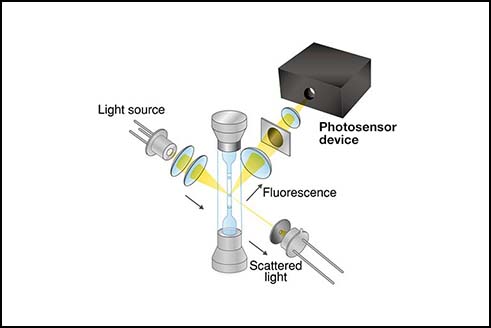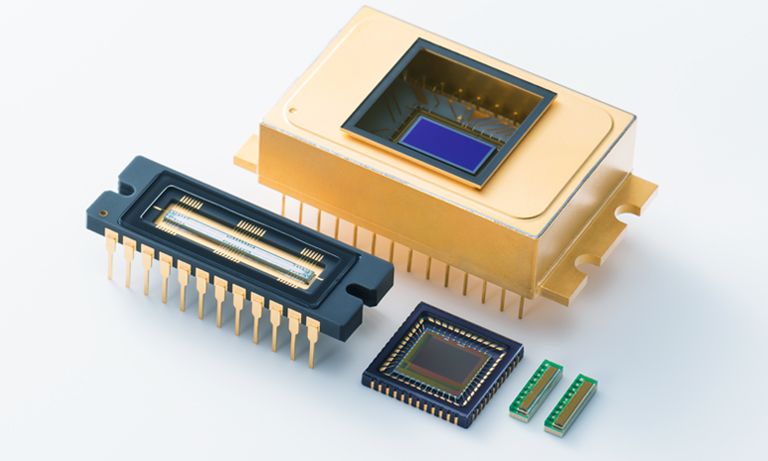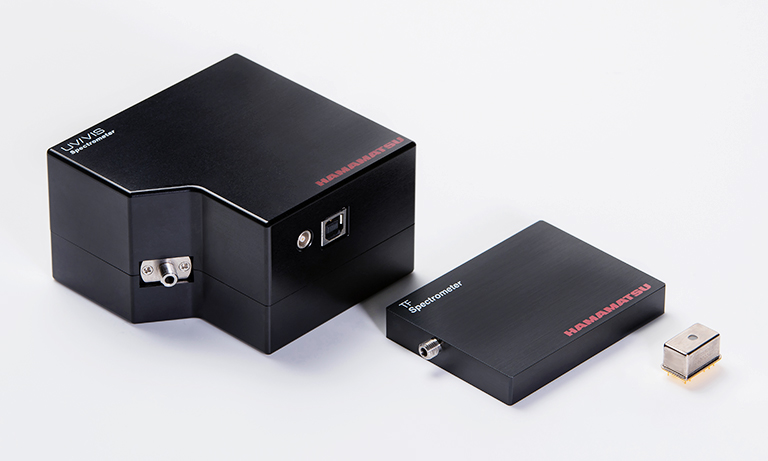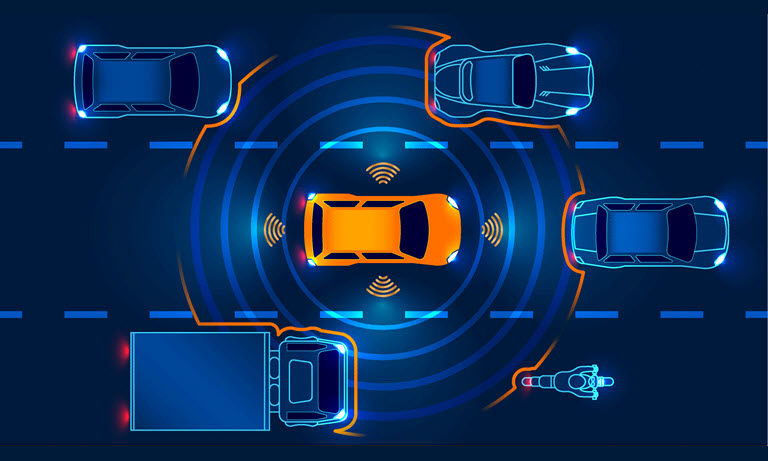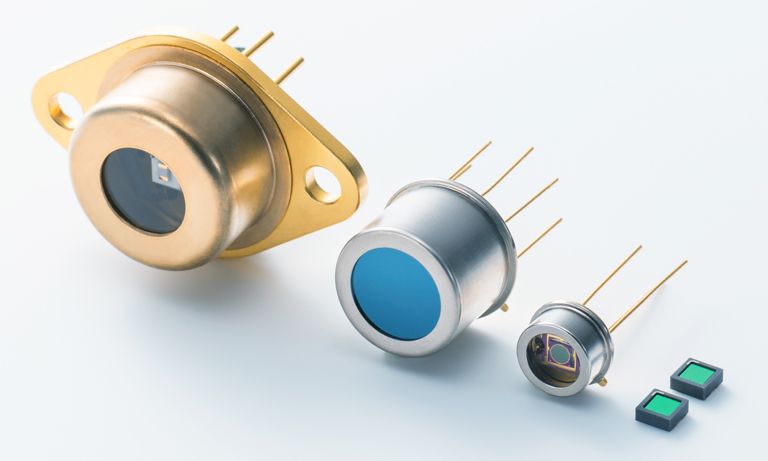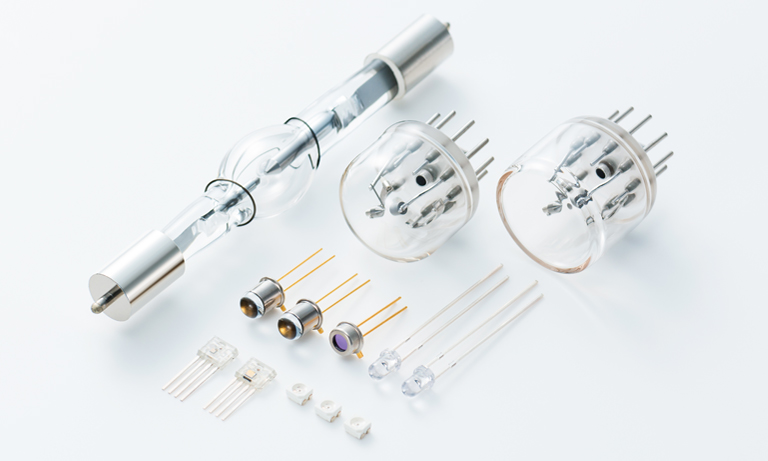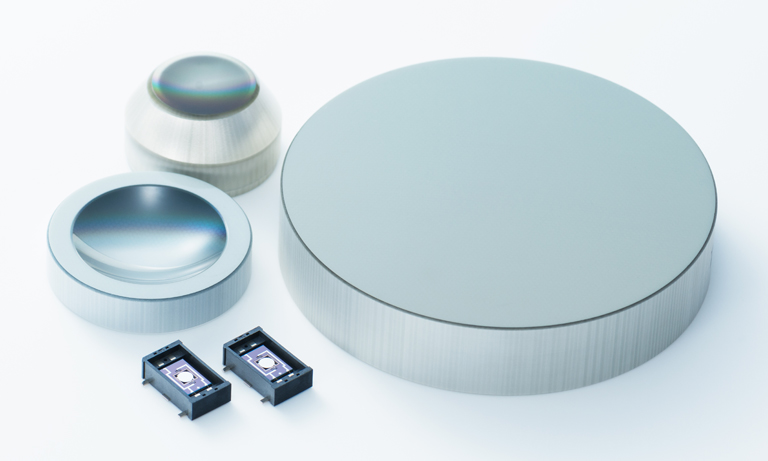Application notes
Technical notes
Ask an engineer
Publications
United States (EN)
Select your region or country.
SiPM/MPPC/SPAD Questions & Answers
- What is SPAD?
- How does a SPAD work?
- How many types of photon counting detectors are available, and how do I choose which best fits my needs?
- What’s an MPPC? Is it similar to an SiPM?
- What’s the maximum amount of light that I can put into my MPPC, photodiode, or APD?
- How do I know which MPPC or SiPM microcell size to pick?
- How big of an MPPC array can I get?
- When should I choose photon counting instead of analog mode?
- When should I choose analog mode instead of photon counting?
What is SPAD?
SPAD stands for single-photon avalanche diode, and some people may call it Geiger-mode avalanche diode. A SPAD is a semiconductor device that can detect low-intensity light, which means it can count single-photon events. SPADs were first introduced in the 1960s and ‘70s, but only recently have they gained more popularity especially in applications such as LiDAR, quantum computing, etc. See SPAD products on our main website.
SPADs are related to SiPMs. A SPAD connected to a quenching resistor is the microcell in an SiPM. Imagine arranging many of these SPADs with quenching resistors in an array, and it will form an SiPM. The operating regime in an I-V curve for SPADs is the same as SiPMs, where the reverse bias voltage is above the breakdown voltage. To learn more about SPADs and SiPMs, check out our collection of technical notes.
How does a SPAD work?
To operate a SPAD, you will need to bias the voltage above the breakdown voltage. When a SPAD is biased above the breakdown voltage, this state is called a meta-stable state; in other words, it means that the current does not flow. If a photon strikes the SPAD, it triggers an avalanche, and the current increases rapidly and reaches a state called steady state. Once the current reaches the steady state, the SPAD is no longer sensitive to light. To bring the SPAD back to the sensitive state, either an active or a passive quenching resistor is required.
How many types of photon counting detectors are available, and how do I choose which best fits my needs?
There are three types of photodetectors that are excellent in detecting a single photon, and they have very high internal gain and serve a diverse range of applications. Hamamatsu offers all three:
- Silicon photomultiplier (SiPM): At Hamamatsu, we also call it the Multi-Pixel Photon Counter (MPPC).
- Single-photon avalanche diode (SPAD): At Hamamatsu, we also call it the Single-Pixel Photon Counter (SPPC).
- Photomultiplier tube (PMT)
The table below can help you differentiate among SPAD, SiPM, and PMT to enable you to choose which photodetector type best fits your needs. To learn more about photon counting detectors, check out our technical notes and webinars:
| Detector | MPPC (SiPM) | SPPC (SPAD) | PMT |
|---|---|---|---|
| Gain | Same | Same | Same |
| Spectral range | 120 to 1000 nm | 320 to 1000 nm | 185 to 900 nm |
| Max count rate | Low | High | Medium |
| Magnetic field | Immune | Immune | Needs protection |
| Dark output | High | Low | Medium |
| Light intensity detection | Easy | Hard | Easy |
| Active area | Medium | Small | Large |
Table 1. General comparison of photon counting detectors
What’s an MPPC? Is it similar to an SiPM?
MPPC stands for Multi-Pixel Photon Counter, the product family that includes our SiPMs. Since we believe the future of Geiger-mode gain detectors includes more than just silicon-based devices, we’ve adopted the term MPPC to cover all the various materials (like InGaAs) that can be used to catch those shifty little photons!
What’s the maximum amount of light that I can put into my MPPC, photodiode, or APD?
If your detector is or has the potential to be exposed to strong light, try to keep the detector’s average current below 100 mA. The detector will be non-linear well before this current range, and exceeding it may cause damage—especially in devices with a wirebond connection. While the detector won’t explode or disintegrate (well, maybe disintegrate if it’s reaaaaalllyyy strong laser light), the wirebond will disconnect and create an open circuit. This destroys a detector’s ability to send current outside of its package.
How do I know which MPPC or SiPM microcell size to pick?
The microcell size affects a few parameters of the MPPC. As you probably know, each microcell requires a quenching resistor which takes up a portion of each microcell’s area, reducing the fill factor. The quenching resistor takes up a smaller percentage of the microcell area as the microcell sizes become larger and larger, so larger microcells have higher fill factor and subsequently higher photon detection efficiency (PDE).
However, larger microcells also mean there are less microcells per unit area. Since the upper limit of an MPPC’s linearity is determined by the number of available microcells, then MPPCs with larger microcells will have a lower upper limit or linearity than an identical-sized MPPC with smaller microcells.
There are other factors to consider as well; for example, larger microcells have larger gain but slower time response due to higher capacitance. Dark counts are pretty much identical, but crosstalk may be higher with larger microcells.
How big of an MPPC array can I get?
Our largest off-the-shelf array is 4x4ch 6mm sq. MPPC array or 8x8ch 3mm sq. MPPC array. We can also offer custom-size arrays or the individual tile-able package MPPC, so the customer can create an array of their own size or shape.
When should I choose photon counting instead of analog mode?
The photon counting method is the better choice when you’re measuring extremely low light levels, so low that each individual photon arrival can be measured separately and the number of photons can be counted.
When you use photon counting, the following noise factors decrease:
- The noise contributions from non-amplified signals (ex. leakage current, small amplitude reflection, noise pickup, etc.)
- The contribution of amplification noise (ex. noise figure and excess noise factor)
The noise reduction will help improve the signal-to-noise ratio (SNR) in your measurements. It also gives you more accurate results compared to ordinary light measurement techniques that measure the output current as analog signals.
The MPPC/SiPM and PMT are both suitable for photon counting due to their excellent time resolution, high gain, and low noise.
When should I choose analog mode instead of photon counting?
You should choose analog mode when you’re measuring higher light levels, where the output pulse intervals are narrow or overlap each other when you read the output on an oscilloscope. In analog mode, the output signal is the mean value of signals. By choosing analog mode, you will preserve the amplitude information, in contrast to photon counting where multiple photons detected simultaneously are counted as one photon.
If you have a technical question you’d like to see answered on this page, email us.
Meet the engineers

Dino Butron is an Applications Engineer, specializing in all of our point detectors and signal-to-noise simulations. He and his photonic sidekick (his cat Bash) tackle technical issues daily.

Shwu Fei Tan is a Marketing Engineer, in Hamamatsu Corporation’s San Jose, CA, office. As part of the MPPC (Multi-Pixel Photon Counter) project team, she likes learning about new and interesting applications of MPPCs, and also creating marketing collateral that explains highly technical concepts in simpler terms. In her spare time, Shwu Fei enjoys challenging yoga poses, which help her focus and connect her body and mind.
- Confirmation
-
It looks like you're in the . If this is not your location, please select the correct region or country below.
You're headed to Hamamatsu Photonics website for US (English). If you want to view an other country's site, the optimized information will be provided by selecting options below.
In order to use this website comfortably, we use cookies. For cookie details please see our cookie policy.
- Cookie Policy
-
This website or its third-party tools use cookies, which are necessary to its functioning and required to achieve the purposes illustrated in this cookie policy. By closing the cookie warning banner, scrolling the page, clicking a link or continuing to browse otherwise, you agree to the use of cookies.
Hamamatsu uses cookies in order to enhance your experience on our website and ensure that our website functions.
You can visit this page at any time to learn more about cookies, get the most up to date information on how we use cookies and manage your cookie settings. We will not use cookies for any purpose other than the ones stated, but please note that we reserve the right to update our cookies.
1. What are cookies?
For modern websites to work according to visitor’s expectations, they need to collect certain basic information about visitors. To do this, a site will create small text files which are placed on visitor’s devices (computer or mobile) - these files are known as cookies when you access a website. Cookies are used in order to make websites function and work efficiently. Cookies are uniquely assigned to each visitor and can only be read by a web server in the domain that issued the cookie to the visitor. Cookies cannot be used to run programs or deliver viruses to a visitor’s device.
Cookies do various jobs which make the visitor’s experience of the internet much smoother and more interactive. For instance, cookies are used to remember the visitor’s preferences on sites they visit often, to remember language preference and to help navigate between pages more efficiently. Much, though not all, of the data collected is anonymous, though some of it is designed to detect browsing patterns and approximate geographical location to improve the visitor experience.
Certain type of cookies may require the data subject’s consent before storing them on the computer.
2. What are the different types of cookies?
This website uses two types of cookies:
- First party cookies. For our website, the first party cookies are controlled and maintained by Hamamatsu. No other parties have access to these cookies.
- Third party cookies. These cookies are implemented by organizations outside Hamamatsu. We do not have access to the data in these cookies, but we use these cookies to improve the overall website experience.
3. How do we use cookies?
This website uses cookies for following purposes:
- Certain cookies are necessary for our website to function. These are strictly necessary cookies and are required to enable website access, support navigation or provide relevant content. These cookies direct you to the correct region or country, and support security and ecommerce. Strictly necessary cookies also enforce your privacy preferences. Without these strictly necessary cookies, much of our website will not function.
- Analytics cookies are used to track website usage. This data enables us to improve our website usability, performance and website administration. In our analytics cookies, we do not store any personal identifying information.
- Functionality cookies. These are used to recognize you when you return to our website. This enables us to personalize our content for you, greet you by name and remember your preferences (for example, your choice of language or region).
- These cookies record your visit to our website, the pages you have visited and the links you have followed. We will use this information to make our website and the advertising displayed on it more relevant to your interests. We may also share this information with third parties for this purpose.
Cookies help us help you. Through the use of cookies, we learn what is important to our visitors and we develop and enhance website content and functionality to support your experience. Much of our website can be accessed if cookies are disabled, however certain website functions may not work. And, we believe your current and future visits will be enhanced if cookies are enabled.
4. Which cookies do we use?
There are two ways to manage cookie preferences.
- You can set your cookie preferences on your device or in your browser.
- You can set your cookie preferences at the website level.
If you don’t want to receive cookies, you can modify your browser so that it notifies you when cookies are sent to it or you can refuse cookies altogether. You can also delete cookies that have already been set.
If you wish to restrict or block web browser cookies which are set on your device then you can do this through your browser settings; the Help function within your browser should tell you how. Alternatively, you may wish to visit www.aboutcookies.org, which contains comprehensive information on how to do this on a wide variety of desktop browsers.
5. What are Internet tags and how do we use them with cookies?
Occasionally, we may use internet tags (also known as action tags, single-pixel GIFs, clear GIFs, invisible GIFs and 1-by-1 GIFs) at this site and may deploy these tags/cookies through a third-party advertising partner or a web analytical service partner which may be located and store the respective information (including your IP-address) in a foreign country. These tags/cookies are placed on both online advertisements that bring users to this site and on different pages of this site. We use this technology to measure the visitors' responses to our sites and the effectiveness of our advertising campaigns (including how many times a page is opened and which information is consulted) as well as to evaluate your use of this website. The third-party partner or the web analytical service partner may be able to collect data about visitors to our and other sites because of these internet tags/cookies, may compose reports regarding the website’s activity for us and may provide further services which are related to the use of the website and the internet. They may provide such information to other parties if there is a legal requirement that they do so, or if they hire the other parties to process information on their behalf.
If you would like more information about web tags and cookies associated with on-line advertising or to opt-out of third-party collection of this information, please visit the Network Advertising Initiative website http://www.networkadvertising.org.
6. Analytics and Advertisement Cookies
We use third-party cookies (such as Google Analytics) to track visitors on our website, to get reports about how visitors use the website and to inform, optimize and serve ads based on someone's past visits to our website.
You may opt-out of Google Analytics cookies by the websites provided by Google:
https://tools.google.com/dlpage/gaoptout?hl=en
As provided in this Privacy Policy (Article 5), you can learn more about opt-out cookies by the website provided by Network Advertising Initiative:
http://www.networkadvertising.org
We inform you that in such case you will not be able to wholly use all functions of our website.
Close


